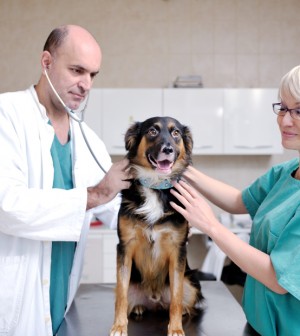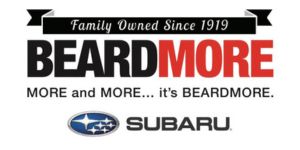- Do you subscribe to Dharma Dog Training’s Newsletter? You should.
- A Unique Campaign from The Humane Society of the United States
- Rabid bats in Omaha- Stay safe, prepared with these tips
- Springtime Activities in Omaha
- Mill Dog Monthly from Bailing Out Benji
- World Spay Day, Legislative Alert in Nebraska
- Attend the Nebraska Rescue Council’s monthly meeting this Saturday
- Five Hard-to-Ignore Reasons to Adopt!
- Paws in Pink to Benefit Breast Cancer Foundation
- VCA, Inc. Acquires MidWest Vet Specialists from Kansas State University
Banfield Animal Hospital measured your pet. Turns out he’s fat.

Banfield Animal Hospitals in 42 states plus D.C. and Puerto Rico administered a five-point survey to 2.5 million dogs and 500,000 cats in 2016. In general, pets have become fatter. In fact, over the last 10 years, the average weight of an obese dog has seen an increase of over 150 percent. And the fattest pets in the U.S. are in…
Minnesota! We knew it all along… All jokes aside though, Nebraska’s animals measured just slightly less fat than our friends to the north. Coming in as the second fattest pets in the country are Cornhusker pets with 39 percent of dogs being overweight and 43 percent of their feline contemporaries measuring as obese.
Why so chunky? There’s no single answer, but the typical too much food, the wrong food, not enough exercise facts are predictable causes. More nuanced things like pets being considered part of the family, the humanizing of pets and, therefore, us accepting differing body shapes in our pets are impactful as well.
Banfield researchers also noticed an inverse relationship between states with the most overweight humans vs. pets. In their analysis of that inverse relationship, Banfield found states with the most overweight humans had some of the highest rates of pets with parasites. Parasites bring their own hardships and more common in animals that aren’t given yearly check-ups and routine veterinary care.
“We are not entirely certain why an inverse relationship between overweight pets and humans exists, but some have theorized overweight people may be less likely to seek preventive care. If this were true for their pets, then they may not get routine preventive care, such as regular de-wormings or fecal exams to identify intestinal parasites,” says Veterinary Research Associate Dr. Kirk Breuninger of Banfield Pet Hospital. “We found that states with lower rates of pet obesity had higher rates of intestinal parasites, which may support this theory, given parasite infestations can make it more difficult for pets to keep weight on. Please note having a parasite infestation is unhealthy, as it can cause a number of health problems beyond an inability to readily put on weight.”
We know what many will say- “My pet is not fat!” Sometimes it is not. Other times, owners are dissonant or ignorant. Whatever the case, here are a few things we can extrapolate from the Banfield numbers and study:
- Sometimes we think going to a raw or grain-free diet is best for our animals. And sometimes we’re right. Other times, that’s not a great thing for all breeds. Check with your vet to see what the correct balance of things should be. Diet is half the battle.
- Exercise levels are down in people, so they’re down in pets. Exercise is the other half of the battle.
- Genetics play a part in obesity, but that doesn’t mean we shouldn’t try to manage our pets’ diets.
- A little change can go a long way. Example: cutting a few calories from the diet or adding a few minutes to activity time can add up to a big number by the end of the week, month, year. Small steps are easier to take.
- More than 20 common pet diseases are linked to obesity. Remove the fat, increase the likelihood of a longer, healthier life.
Other studies and awareness groups cite obesity levels as higher than the Banfield numbers. This is partially due to different measures, smaller samples, and angles they’re trying to get others to believe in. Regardless of where one looks, however, there’s no disputing the numbers taken as a whole. Our pets are fatter than they used to be, on average.
Manage diets, increase activity times and frequency, and check your pet into the vet’s office at least once per year and you’ll see a difference, thus making a difference overall. Do your part and your animals will thank you for it!
Related Posts
Latest News
-
How Can I Avoid Fleas and Ticks On My Pet?
Has your dog or cat ever had fleas or ticks,...
- Posted 5 hours ago
- 0
-
What Vaccinations Does My Pet Need?
Is your dog or cat current on their shots and...
- Posted 5 days ago
- 0
-
What Signs to Look For When My Pet Has a Cold
You have probably heard the expression, “sick as a dog.”...
- Posted 2 weeks ago
- 0
-
How Often Should I Groom My Pet?
Do you have a grooming ritual for your furry friend?...
- Posted 3 weeks ago
- 0
-
From Kibble to Cuisine: Finding the Perfect Food For Your Pet
Do you ever wonder what the difference is between regular...
- Posted 1 month ago
- 0
-
The Essential Guide to Pet Care: Meeting Your Furry Friends Basic Needs
Are you a first-time pet owner and need to know...
- Posted 1 month ago
- 0
-
Say Cheese! Tips for Keeping Your Pet’s Pearly Whites Clean
Did you know that keeping your dog or cat’s teeth...
- Posted 2 months ago
- 0























You must be logged in to post a comment Login